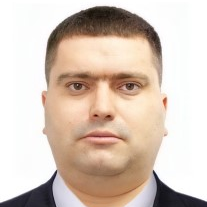Mathematical Modeling of Hereditarity Oscillatory Systems
A special issue of Mathematics (ISSN 2227-7390). This special issue belongs to the section "Mathematical Physics".
Deadline for manuscript submissions: closed (31 October 2020) | Viewed by 10794
Special Issue Editors
Interests: fractional calculus; fractional oscillators; fractional dynamics; numerical methods; mathematical modeling
Special Issues, Collections and Topics in MDPI journals
Interests: fractional calculus; fractional differential equation; mathematical modeling
Special Issues, Collections and Topics in MDPI journals
Special Issue Information
Dear Colleagues,
This Special Issue of the journal Mathematics is devoted to recent advancements in the study of the hereditary properties of oscillatory processes and systems, as well as their possible applications in mechanics, physics, biology, economics, and other sciences. The hereditary properties of oscillatory systems are manifested in the dependence of their current states on previous states. This memory property is usually described using integro-differential equations with difference kernels, which are called memory functions. In the particular case where the memory functions are power law, the integro-differential equations can be written in terms of derivatives of fractional orders, which are studied in the framework of fractional calculus. Therefore, oscillatory systems, taking into account the effect of “power memory”, are sometimes called fractional oscillators in the literature. As the works of recent years have shown, fractional oscillators can have important applied values, and their characteristics can be related to the properties of the medium through the orders of fractional derivatives included in the model equations.
Prof. Dr. Roman Parovik
Prof. Dr. Arsen V. Pskhu
Guest Editors
Manuscript Submission Information
Manuscripts should be submitted online at www.mdpi.com by registering and logging in to this website. Once you are registered, click here to go to the submission form. Manuscripts can be submitted until the deadline. All submissions that pass pre-check are peer-reviewed. Accepted papers will be published continuously in the journal (as soon as accepted) and will be listed together on the special issue website. Research articles, review articles as well as short communications are invited. For planned papers, a title and short abstract (about 100 words) can be sent to the Editorial Office for announcement on this website.
Submitted manuscripts should not have been published previously, nor be under consideration for publication elsewhere (except conference proceedings papers). All manuscripts are thoroughly refereed through a single-blind peer-review process. A guide for authors and other relevant information for submission of manuscripts is available on the Instructions for Authors page. Mathematics is an international peer-reviewed open access semimonthly journal published by MDPI.
Please visit the Instructions for Authors page before submitting a manuscript. The Article Processing Charge (APC) for publication in this open access journal is 2600 CHF (Swiss Francs). Submitted papers should be well formatted and use good English. Authors may use MDPI's English editing service prior to publication or during author revisions.
Keywords
- Oscillator
- Fractional calculus
- Heredity
- Fractional derivative
- Phase trajectories
- Oscillograms






